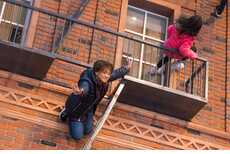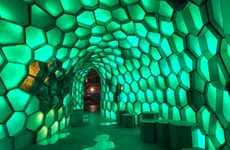
This Piece by 'Drzach&Suchy' is a Transformative Experience
John Ibbitson — December 28, 2011 — Art & Design
References: drzachsuchy.ch & fastcodesign
This 3D Portrait of Albert Einstein created by Switzerland-based artists 'Drzach&Suchy' uses an optical illusion to transform into a picture of Marilyn Monroe when changes are made in surrounding light. The artists behind the piece, entitled Conversation, used a special technology to create a piece that seemingly changes as light shifts in direction when being cast on its surface.
Conversation is actually only one of three different works that the artists created for an installation at the Swiss Science Center Technorama that combines art with the science of light to create a visually stunning and exciting exhibit that will marvel children and adults alike. So if you happen to be in the area, check out this awe-inspiring display by Drzach&Suchy, and prepare to be amazed.
Conversation is actually only one of three different works that the artists created for an installation at the Swiss Science Center Technorama that combines art with the science of light to create a visually stunning and exciting exhibit that will marvel children and adults alike. So if you happen to be in the area, check out this awe-inspiring display by Drzach&Suchy, and prepare to be amazed.
Trend Themes
1. Optical Illusion Art - There is an opportunity to explore other technologies such as augmented reality (AR) and virtual reality (VR) to create more immersive optical illusion art.
2. Interactive Art Exhibits - There is an opportunity for other art exhibits to incorporate scientific concepts and technologies to create interactive and visually stimulating experiences.
3. Light-based Installations - There is an opportunity to explore and develop new applications for light technology in the art and design industries to create installations that react to and interact with the surrounding environment.
Industry Implications
1. Art - The art industry can explore new technologies and scientific concepts to create engaging and interactive exhibits for both adults and children.
2. Science Centers - Science centers and museums can incorporate more artistic elements into their exhibitions to appeal to a wider audience and showcase the intersection of art and science.
3. Design - Designers can experiment with new materials and technologies to create installations and furniture pieces that incorporate light and optical illusions.
2.6
Score
Popularity
Activity
Freshness















